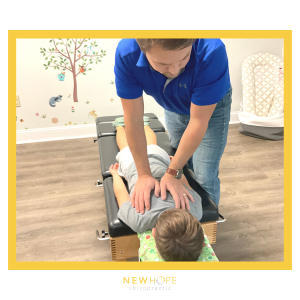 If you’re a parent who is deeply concerned about your child who is grappling with the challenges of uncontrollable motor tics, rest assured, you’re not alone. Watching your child struggle with these involuntary movements can be an emotionally draining and perplexing experience. However, knowledge is power, and understanding the root causes of motor tics can be the first step towards empowering yourself as a parent to take proactive, drug-free measures that can make a profound difference in your child’s overall well-being.
If you’re a parent who is deeply concerned about your child who is grappling with the challenges of uncontrollable motor tics, rest assured, you’re not alone. Watching your child struggle with these involuntary movements can be an emotionally draining and perplexing experience. However, knowledge is power, and understanding the root causes of motor tics can be the first step towards empowering yourself as a parent to take proactive, drug-free measures that can make a profound difference in your child’s overall well-being.
Understanding Motor Tics
Motor tics, at their core, are involuntary movements that arise from built-up neurological tension. They are a common feature of a neurological condition called Tourette syndrome, although they can occur in other disorders like chronic motor tic disorder and transient tic disorder. These movements can take various forms., from subtle facial twitches and shoulder shrugs to more complex actions that might include neck bending, mouth opening, clenching, and even vocal tics accompanied by sounds, grunting, and more.
Recognizing symptoms of motor tics is important. They can manifest in a wide range of ways, from seemingly inconspicuous eye blinks to more pronounced and complex movements. These movements, at times, can become noticeable to the extent that they affect your child’s daily life.
The Root Causes of Motor Tics
A key piece of the puzzle is understanding the root causes of your child’s motor tics. Subluxation, a term referring to misalignment, tension, and dysfunction within the neuromuscular system, is often a significant contributor to the development of motor tics.
 Imagine your child’s nervous system as a complex network of communication pathways, like a web of electrical wires. When subluxation occurs, it’s akin to a kink in one of those wires, which disrupts the flow of communication within the nervous system. This disruption can result in heightened stress and tension within the nervous system. The accumulation of this stress and tension can, in turn, manifest in your child as motor tics. Similar to a pressure cooker, where the internal tension builds up and eventually finds an outlet through involuntary muscle movements.
Imagine your child’s nervous system as a complex network of communication pathways, like a web of electrical wires. When subluxation occurs, it’s akin to a kink in one of those wires, which disrupts the flow of communication within the nervous system. This disruption can result in heightened stress and tension within the nervous system. The accumulation of this stress and tension can, in turn, manifest in your child as motor tics. Similar to a pressure cooker, where the internal tension builds up and eventually finds an outlet through involuntary muscle movements.
Understanding the connection between subluxation and motor tics can be pivotal because it can shed light on potential solutions. By addressing and alleviating subluxation, you can help relieve underlying stress and tension on the nervous system, which is often the core of motor tic development.
What Makes Motor Tics Worsen?
Motor tics tend to exacerbate when external stressors come into play. Factors like growth spurts, seasonal changes, immune challenges, or emotional distress in your child’s life can intensify motor tics. These events can act as triggers, amplifying the underlying stress and tension (subluxation) in the nervous system.
The Connection with Other Conditions
Motor tics frequently co-occur with other conditions such as ADHD, Autism, and anxiety. Interestingly, all these conditions share a common thread – they are rooted in excessive stress and tension in the nervous system. The correlation highlights the importance of addressing the core issues.
Conventional medical treatment options for motor tics often involve prescription medications like Clonidine and Guanfacine. Unfortunately, these medications can bring a host of side effects with them, including sleepiness, fatigue, mood changes, headaches, and gut issues, leaving many parents searching for alternative solutions.
 If you are a parent who seeks natural solutions and wants to explore options beyond medications, consider delving deeper into the role of subluxation and neurological tension in motor tics. Neurologically-Focused Chiropractic may hold the answers you’ve been searching for. It empowers you with drug-free action steps to help your child regain control over their health and well-being.
If you are a parent who seeks natural solutions and wants to explore options beyond medications, consider delving deeper into the role of subluxation and neurological tension in motor tics. Neurologically-Focused Chiropractic may hold the answers you’ve been searching for. It empowers you with drug-free action steps to help your child regain control over their health and well-being.
To learn more about subluxation, neurological tension, and how Neurologically-Focused Chiropractic may be the natural solution you’ve been looking for, reach out to us at New Hope today. It is a vital step in your journey towards helping your child overcome the challenges of motor tics and nurturing their overall health and happiness. If you are not local to us, check out the PX Docs directory to find an office near you!

